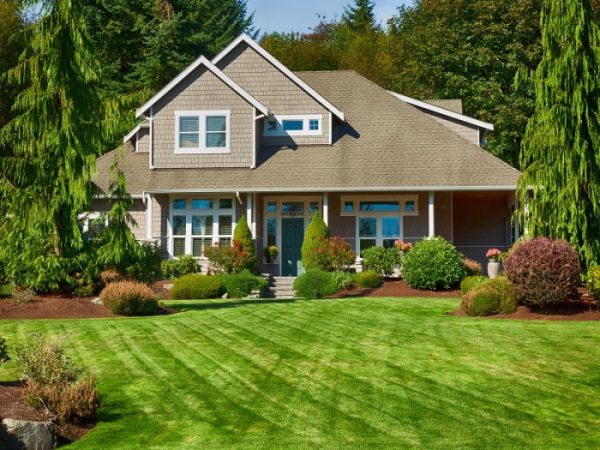 Lawn-care experts will tell you that all landscaping mistakes by homeowners ultimately come down to two errors: not paying enough attention to your home’s outdoor space, and paying too much attention to it. For every neglected, overgrown yard is another one down the block that’s been left brown and barren by an overzealous use of fertilizer and cutting the grass to within an inch of its life.
Lawn-care experts will tell you that all landscaping mistakes by homeowners ultimately come down to two errors: not paying enough attention to your home’s outdoor space, and paying too much attention to it. For every neglected, overgrown yard is another one down the block that’s been left brown and barren by an overzealous use of fertilizer and cutting the grass to within an inch of its life.
Springtime is in full gear, and so is the temptation to tackle your lawn. Heed these warnings:
INATTENTION
Not following product instructions: When putting fertilizers and other chemicals on your lawn, remember that spring formulations will not be effective in the fall, and vice versa. Read the instructions!
Ten minutes watering the lawn once a week is fine, right? Wrong. You may be outside much longer than that, depending on the size of your yard. Ideally, you want the soil to be moist six inches under the surface. The first time you water, use a shovel to check the depth of water penetration every 15 minutes. Keep track of how long it takes for soil six inches down to get moist, then water that same amount of time the next time.
Dogs can cause serious landscaping and lawn problems. Train your dog to relieve itself in a special area, away from the lawn.
If you don’t pay attention to erosion-prone areas in your yard, you could lose topsoil and face-worsening erosion issues. Consider building a retaining wall to keep your plants and landscaping in top form.
Not paying attention to climate zones when choosing plants is a waste of money, pure and simple. Temperature, humidity, rain, wind, and sunlight affect plant growth, and plants must be able to survive the average high and average low temperatures for your region. Consult the USDA Plant Hardiness Zone Map to choose plants that are right for your yard, and keep in mind that microclimates can exist within your yard, too.
TOO MUCH ATTENTION
If mowing isn’t your idea of outdoor fun, you might be tempted to skip a weekend by cutting the grass extra short. And while cutting the grass shorter may save you from mowing so often, it ends up starving the plant, as sunlight is collected via the leaves. Grass should never be cut lower than two-and-a-half to three inches.
It seems to make sense: If one bag of fertilizer or weed killer will help beautify your lawn, then four or five bags will make it look totally fabulous, right? Wrong again. Remember that too much of a good thing can burn and even kill grass and plants.
Perhaps you want a lush yard fast, so you buy more plants and plant them closer together. But by planting bushes, shrubs, trees, annuals, or perennials closely together, you’re not giving them room to grow. And you’re forcing them to compete with each other for sunshine and nutrients in the soil. You won’t be happy with those results. Check with a local nursery for recommendations on how far apart to plant.
(Photo: iStock/akurtz)

